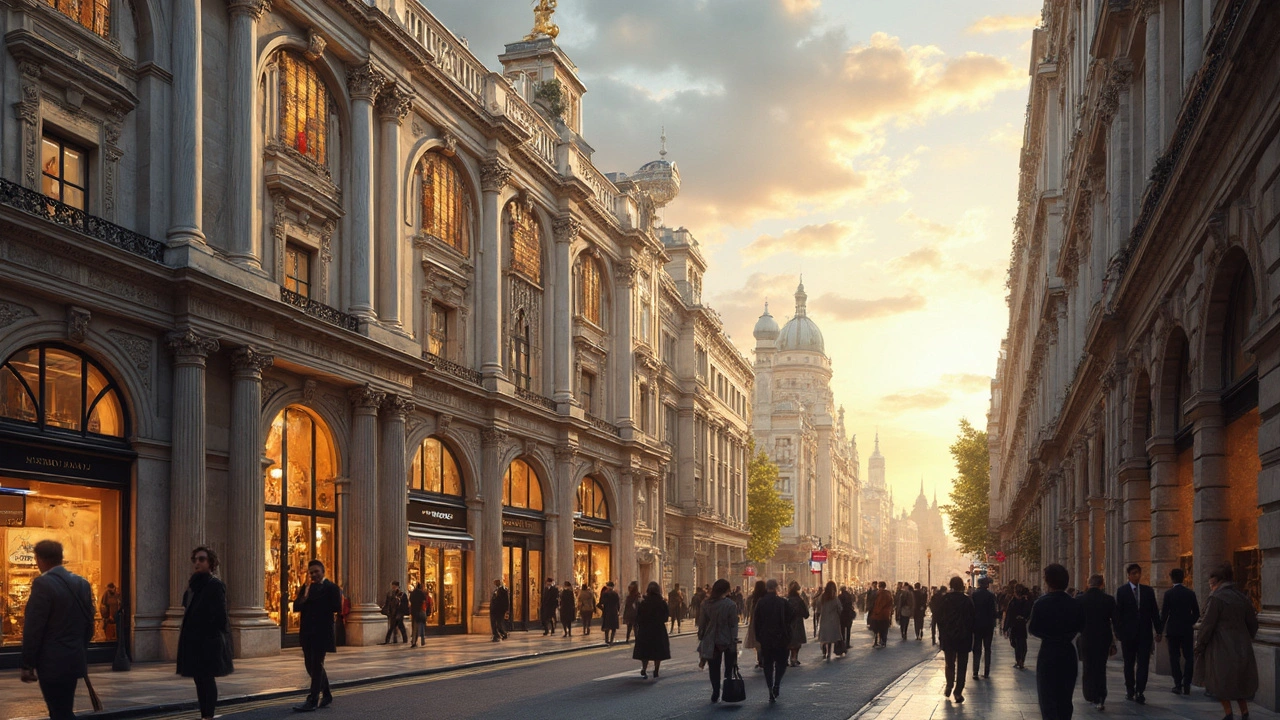Baroque architecture, with its drama and bold forms, isn't just a relic of the past—it still inspires buildings and cities today. This article explores how the style’s curves, grand entrances, and eye-catching details influence modern malls, churches, offices, and even everyday homes. You'll see how designers borrow from Baroque to make buildings memorable and functional in our fast-paced world. We’ll break down iconic features and how you spot them in your own neighborhood. Plus, there are tips on adding a bit of Baroque style to your own space.
Urban spaces: How design shapes city life
More than half the world lives in cities, and the way we shape urban spaces decides how comfortably we live. Good public spaces pull people out of cars, boost small businesses, and make neighborhoods feel livable. Bad ones push people away, create dead zones, and increase costs for everyone.
On this tag page you'll find practical guides, history, and real examples showing how different styles—like Beaux‑Arts boulevards, high‑tech towers, or Mediterranean courtyards—translate into city life. Each article explains what to look for and why a style matters for streets, parks, and skylines. Below are quick takeaways to help you spot useful design ideas when you walk your city.
Quick reads that help you see cities differently
Beaux‑Arts: grand streets and civic pride. Articles here show how wide avenues and public buildings organize city flow and make places easy to navigate. You'll learn simple signs—symmetry, monumental steps, and stone facades—that signal civic centers worth visiting.
High‑Tech and Neo‑Futurism: skyline tools, not just looks. These styles use glass, steel, and visible systems to push density up while saving ground-level space. Our posts explain how voids, skybridges, and exposed structure create usable public edges and influence microclimates.
Constructivist and Expressionist work taught us to be bold with form. That boldness can create memorable plazas that draw people in or awkward corners that feel unsafe. We point out the design moves that succeed and the ones that fail, so you can copy the first and avoid the second.
Historic revivals (Greek, Renaissance, Colonial): they teach restraint and rhythm. Old rules about proportion, window placement, and cornice lines still help when you retrofit streets or add new buildings. Read the posts to find precise tips for matching height, spacing, and materials without looking fake.
Practical tips you can use tomorrow
Make small plazas work: add seating that faces the street, create clear sightlines, and provide shade. Those three moves increase time people spend there and improve safety. If you can, add local retail at ground level to keep activity going after office hours.
Fix dead facades by breaking them into rhythms: windows, doors, and small bays make long walls feel human. For narrow streets, keep cornice lines and window heights consistent so the scale reads correctly at eye level. When renovating, save window proportions even if you change materials.
For developers: invest in the first ten feet next to the sidewalk. A transparent ground floor and a short step-free entry drastically increase foot traffic and rents. For planners: prioritize connected routes and visible crossings; small detours cut pedestrian flow more than you expect.
Our tagged articles combine photos, history, and how-to advice. You'll see case studies from wide boulevards to tight alleys and get straightforward do-and-don't lists for each style. Use them to argue for better streets, design quick fixes, or inspire a larger project.
Want help with a block or project? Tell us the location and the problem—too quiet, too windy, or too car‑focused—and we'll point to the most relevant posts on this tag. Urban spaces change fast once you know which levers to pull. Try one change.

